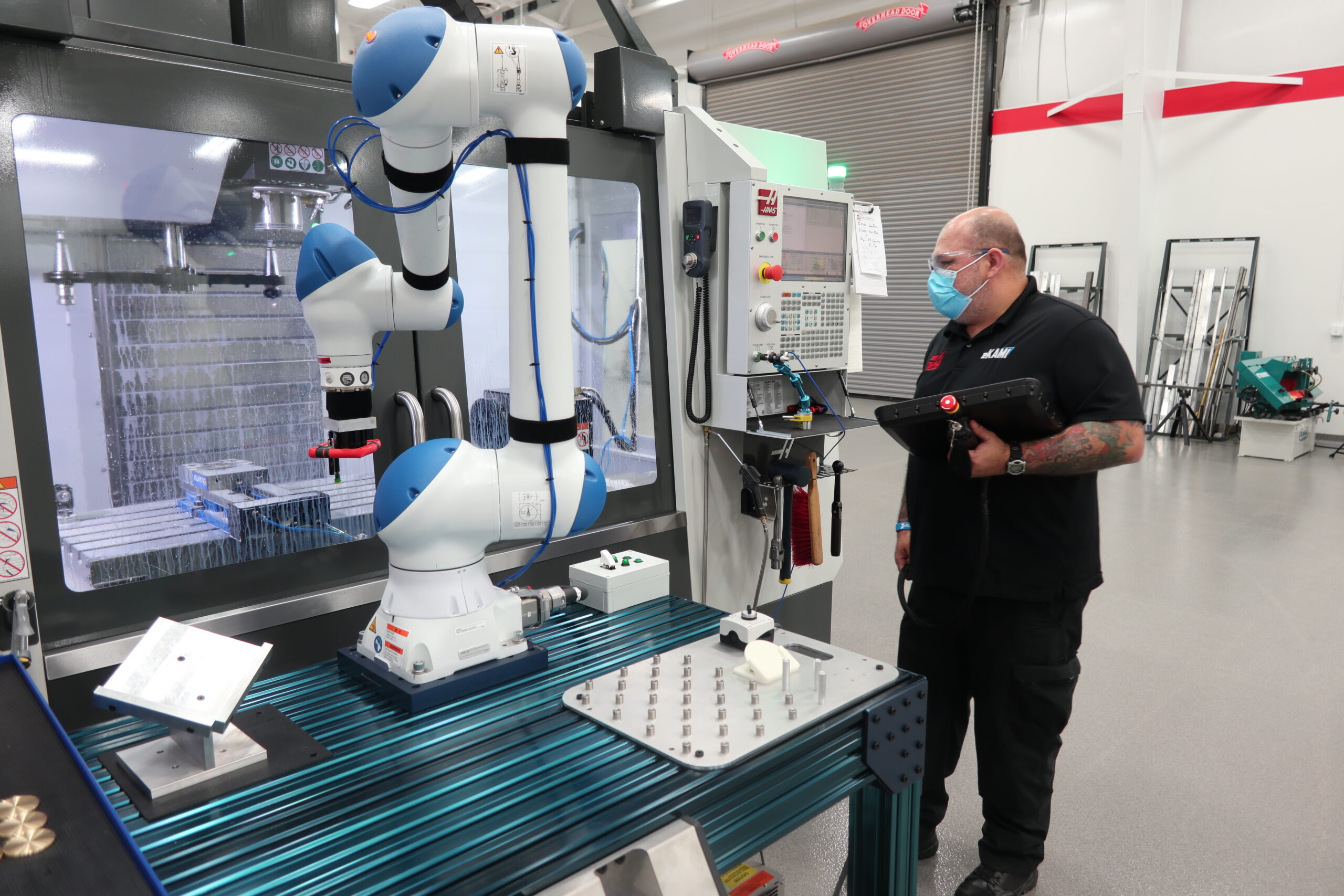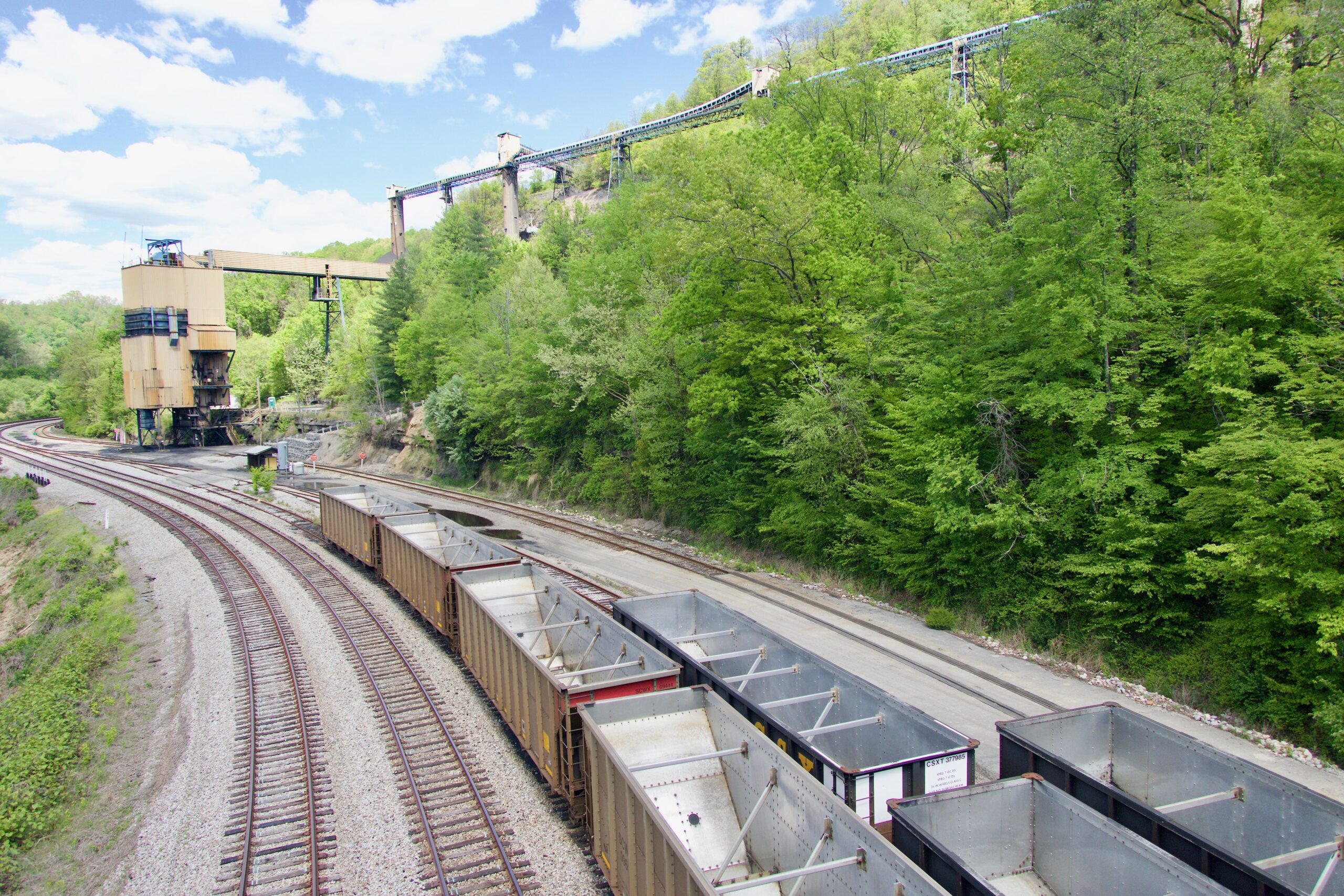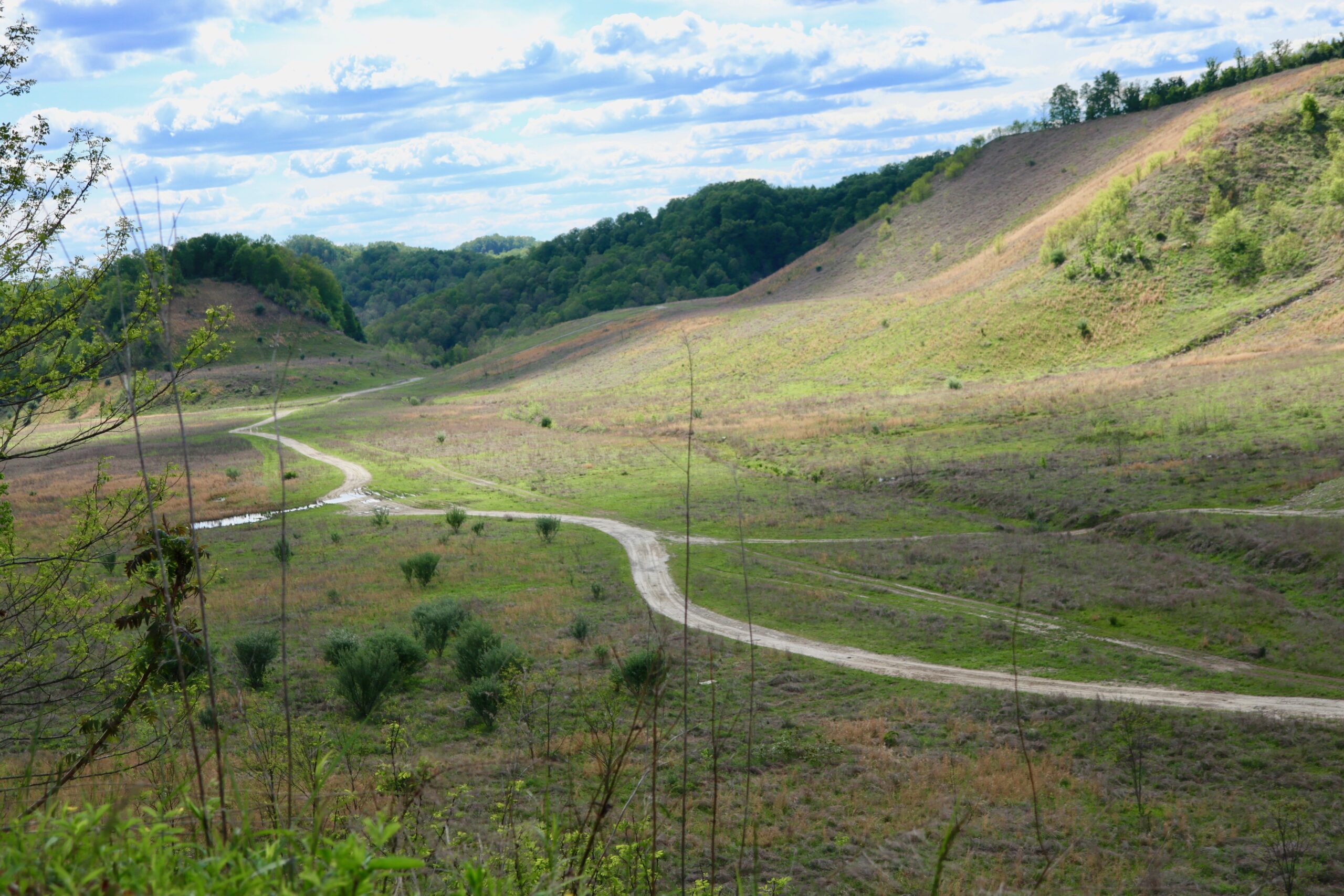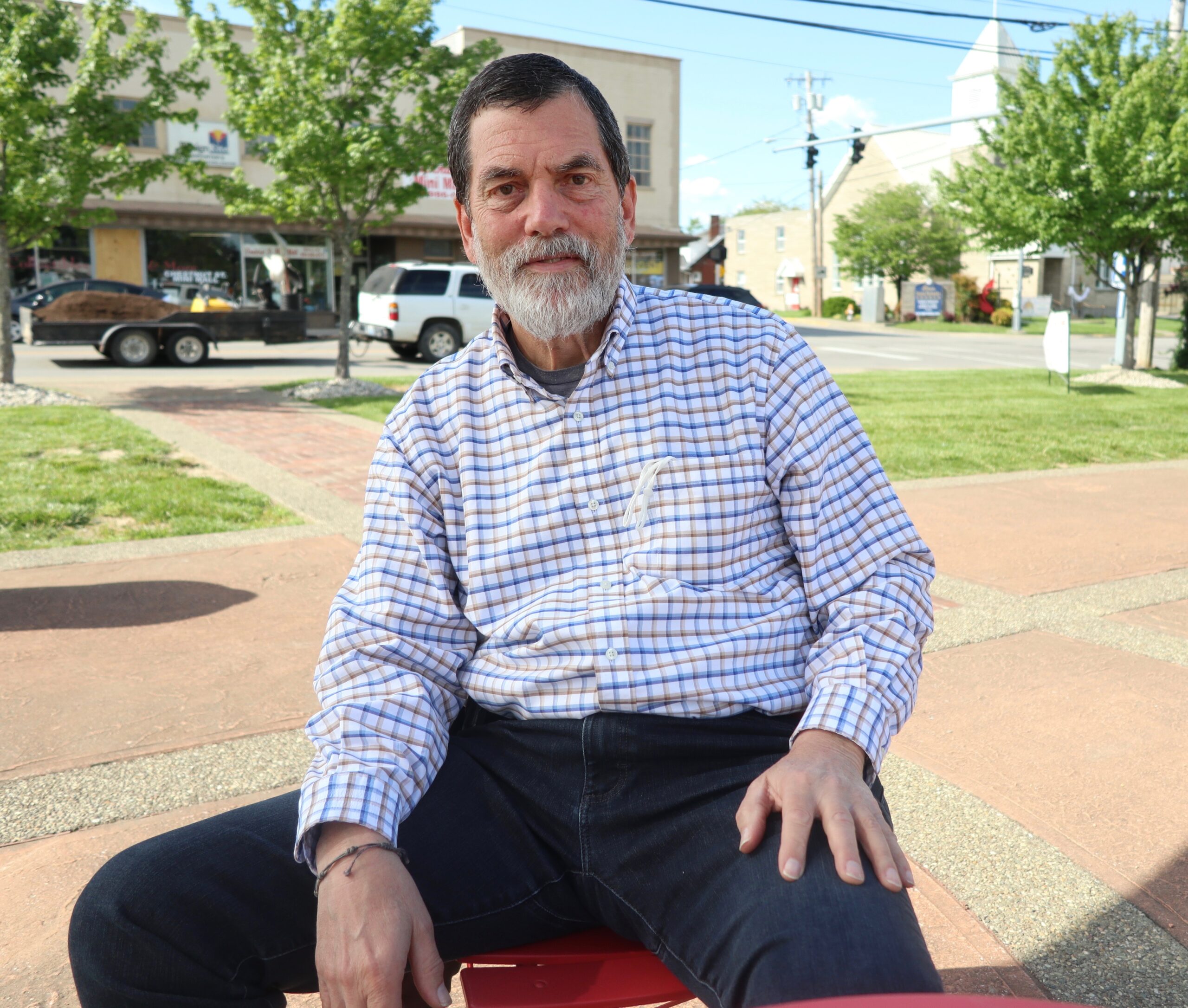
PAINTSVILLE, KY. – On April 23, 12 weeks after President Joe Biden signed an executive order that promised to help rural regions of the East and Great Plains move past their dependence on fossil energy markets, the administration identified $37.9 billion in existing federal grant and loan accounts to meet the president’s job creation and revitalization goals.
One of those accounts, administered since 2016 by the Department of the Interior, helped start a high-tech manufacturing training center in this eastern Kentucky town that is widely regarded as a singular success story of federal support for development in Appalachian coal country. But that same account, the $115 million-a-year Abandoned Mine Lands Economic Revitalization (AMLER) grant program, also illustrates the complexity and challenge of developing 21stcentury economies in regions so heavily influenced by 20thcentury fuels.
The 40,000 square-foot training center here in Johnson County, shaded by the 80-foot highwall of a reclaimed abandoned coal mine, is the home of Eastern Kentucky Advanced Manufacturing Institute. In 2016 and 2017, the newly-organized institute was awarded two grants totaling $3.5 million from the AMLER program, which specifically calls for projects that produce new jobs on or adjacent to reclaimed abandoned mines.
eKAMI, as it’s known, has run with that idea. The non-profit institute has trained nearly 200 eastern Kentucky workers, most of them men, many of them laid off coal miners, since its first class in 2018. During the 15-week course, which also is supported by a separate federal grant, students learn to program and operate digital machining tools and autonomous robots. eKAMI’s students graduate to $28 to $32 per hour jobs in the thriving Middle Atlantic intelligentmanufacturing sector. The non-profit group itself employs 8 people.

eKAMI has established such a credible track record that it won $6.4 million more in AMLER grants in 2018 and 2020 to build and staff a similar training center 40 miles west at the medium-security Eastern Kentucky Correctional Complex in Morgan County, the state’s largest prison.
“Manufacturers are seeking a talented workforce. They’re here recruiting even before our classes graduate,†said Kathy Walker, a former coal industry executive who founded eKAMI in 2015. “Our waiting lists are long. We have a lot of people who want to work. It takes courage to flip the switch from mining to 21stcentury advanced manufacturing. But they find out they can do it.â€
Yet even as it is recognized in Washington and Frankfort, Kentucky’s capital, as a champion Appalachian job developer, eKAMI also illustrates another principle of targeting federal funding to foster development in declining fossil energy regions. Producing good jobs and revitalizing regional economies is exceptionally difficult. More money is just a start.
“If you just look at the dynamics of what’s going on at eKAMI in terms of trying to build a new economy in eastern Kentucky, what’s happening is they’re training an able workforce and then shipping them out,†said Peter Hille, president of the Mountain Association, a non-profit community economic development group in Berea. “That’s another form of extraction, right? The solution has to be really broad and integrated. The pieces have to knit together so that they build on each other.â€
Walker notes that her primary goal is to recruit an advanced manufacturer to settle in Paintsville, or other small eastern Kentucky towns where reclaimed mine lands qualify for AMLER grants. Buford Owens, an eKAMI instructor, who worked for 30 years as an underground coal miner before he was laid off in 2017, added that while most graduates commute out of the region for jobs in northern Kentucky, Ohio, and Tennessee, they typically return home on weekends. “That’s wages that are circulating in towns around here. It’s helping the area,†he said.

Still, the larger point that Hille raised is relevant, just as it’s been for over half a century. In 1964, President Lyndon Johnson unveiled the War on Poverty and created the Appalachian Regional Commission to direct tens of billions of dollars to various job creation and development initiatives in 13 states from western New York to Mississippi. Eastern Kentucky’s efficient and scenic highway network, which ended the region’s transportation isolation, is one measure of the commission’s effectiveness. But Census data also shows that eastern Kentucky counties, including Johnson County, are entangled by poverty rates that are more than twice the national average.
Joe Biden is the latest U.S. president to direct Johnson’s poverty-fighting goal to job creation on ruined industrial landscapes. President Jimmy Carter first introduced the concept in 1977 when he signed the bill that has spent $7 billion — so far — to reclaim Appalachia’s abandoned coal mines. Carter signed a second bill in 1980 that authorized a total of $5 billion spent to date for cleaning up the nation’s Superfund toxic chemical sites.
President George H.W. Bush approved the environmental cleanup program for the nation’s nuclear weapons plants in the late 1980s, which now spends almost $7 billion annually. President Bill Clinton, in the early 1990s, approved the Pentagon’s even larger program to rid installations of chemical wastes and other toxic hazards.
The economic logic behind big land restoration programs is pretty clear. A study published in May by the Political Economy Research Institute at the University of Massachusetts calculated that every $1 million spent on reclaiming abandoned mines generates 8 direct and indirect jobs.
The Abandoned Mine Lands Revitalization grant program embraces those data points and advances them several steps. It asks private businesses and local governments to collaborate on projects that join mine-land restoration with job-producing results beyond earth removal and grading. Since it was established in 2016, with heavy lifting by Representative Hal Rogers, a Republican of Kentucky and former chairman of the House Appropriations Committee, the AMLER program has authorized $655 million in grants in six coal-producing states and for three tribes. Kentucky’s share so far is $140 million.

reclaimed surface mine in Martin County. (Photo/Keith Schneider)
According to Kentucky authorities, 55 projects in 21 counties have been selected for AMLER grants; $42 million has been spent to date and $79 million more has been approved. Grantees, according to the state, “have projected over 4,000 jobs.†But neither the state nor the Department of Interior has conducted a formal assessment of the accuracy of that number.
Kentucky’s AMLER projects, like those in the five other Appalachian states, are typically small, scattered, and hard to find, just like the towns where they are located in the state’s heavily forested and steep Appalachian region.
State authorities, who review applications for the federal grants, cite other successful projects that fall into two basic categories.
The first is assistance to build industrial parks and to help recruit new industries. For instance, Perry County won a $6.5 million grant in 2018 to add capacity to Dajcor Aluminum’s renovated plant. The Canadian company’s modernized plant is in the Coalfields Regional Industrial Park, which benefitted from a $900,000 AMLER grant in 2017 for a natural gas service pipeline. The company has added 31 employees since December, according to the state.
The second category seeks to grow a new rural Appalachian economy from the natural and cultural resources at hand — reclaimed mine lands, recovering forests, ample farm land, and eastern Kentucky’s intriguing history and mining culture.
A rails-to-trails project, for instance, opened this spring on a former coal railroad corridor in Prestonsburg with the help of a $1.95 million AMLER grant awarded in 2016. It serves as a foundation of the developing recreational economy in the town of 3,250 residents.
The developers of The Wilds of Emily Creek have applied for a $3.5 million AMLER grant to turn 7,000 acres of forest and reclaimed mine lands into an ecotourism attraction on former mine sites in Martin and Pike counties. The project has already gained a $300,000 grant from the U.S. Department of Agriculture to control invasive plants. “We’ve got a big canvas here to work with,†said Kenneth Van Hoose, who manages the project. “We’ll take our time to make this a place people want to visit.â€
AMLER grants in the five other coal-mining states of the East are invested in similar projects promoting the reclaimed landscape. In southwest Virginia, Project Thoroughbred, a grain processing plant meant to bolster a nascent malted barley economy in coal country and generate 50 jobs,was awarded a $2 million AMLER grants in 2019.
The largest AMLER grant in Kentucky, $12.5 million, was awarded in 2016 to the Appalachian Wildlife Foundation, a non-profit development group, to build an 80,000 square foot wildlife center on abandoned mine lands in Bell County, in the southeast corner of the state. That project, Boone’s Ridge, has evolved into a $56 million, 12,000-acre recreation destination that is under construction. The foundation has benefited from two other federal rural grants and loan programs – $3.1 million from the Appalachian Regional Commission for constructing infrastructure, and $23 million in loan guarantees from the U.S. Department of Agriculture.

that ended eastern Kentucky’s transportation isolation. (Photo/Keith Schneider)
Frank Allen, the foundation’s chairman, projects that when it is completed in May 2023, Boone’s Ridge will be capable of employing almost 250 staff members and attracting 1 million visitors a year. But Allen has $10 million more to raise. “This is really hard work in this region,†he said. “There is only so much the federal government can do. I’ve learned the hard way. Investors would much rather go into urban environments.â€
Few regions of the country know the “hard way†more intimately than eastern Kentucky. As recently as the early 1990s, eastern Kentucky mines produced 130 million tons of coal annually. Last year it was under 10 million tons, according to federal figures. Thousands of abandoned mines await reclamation, according to the Interior Department. In 1950, eastern Kentucky mines employed nearly 70,000 miners. Just over 2,000 miners are working now.

eKAMI’s lengthy waiting list for students seeking training reflects that number. “These are new collar workers,†said Kathy Walker, the founder. “We need to train them in mass. Much morethan we are capable of doing now. I can tell you, manufacturers have jobs waiting for them.â€
— Keith Schneider
A version of this article was published by Energy News Network on June 8, 2021.
